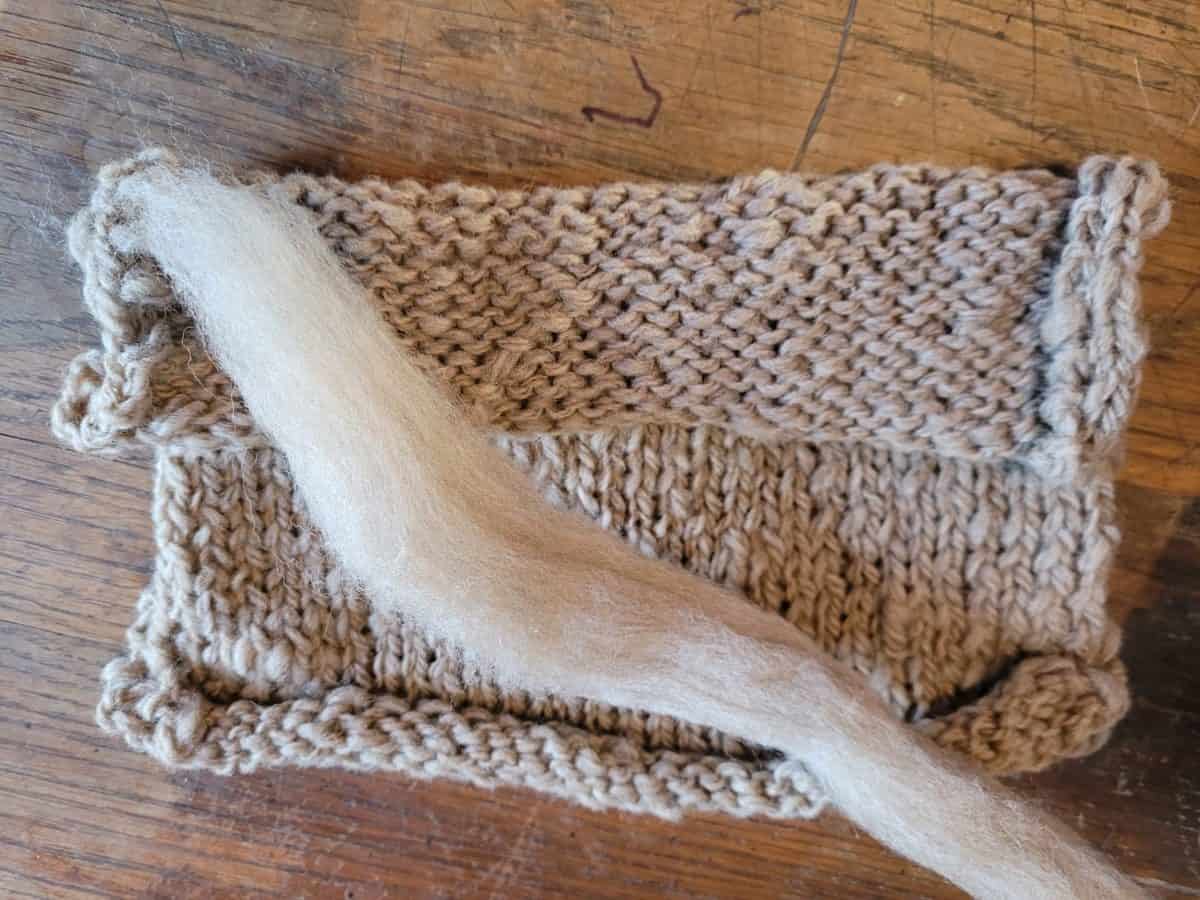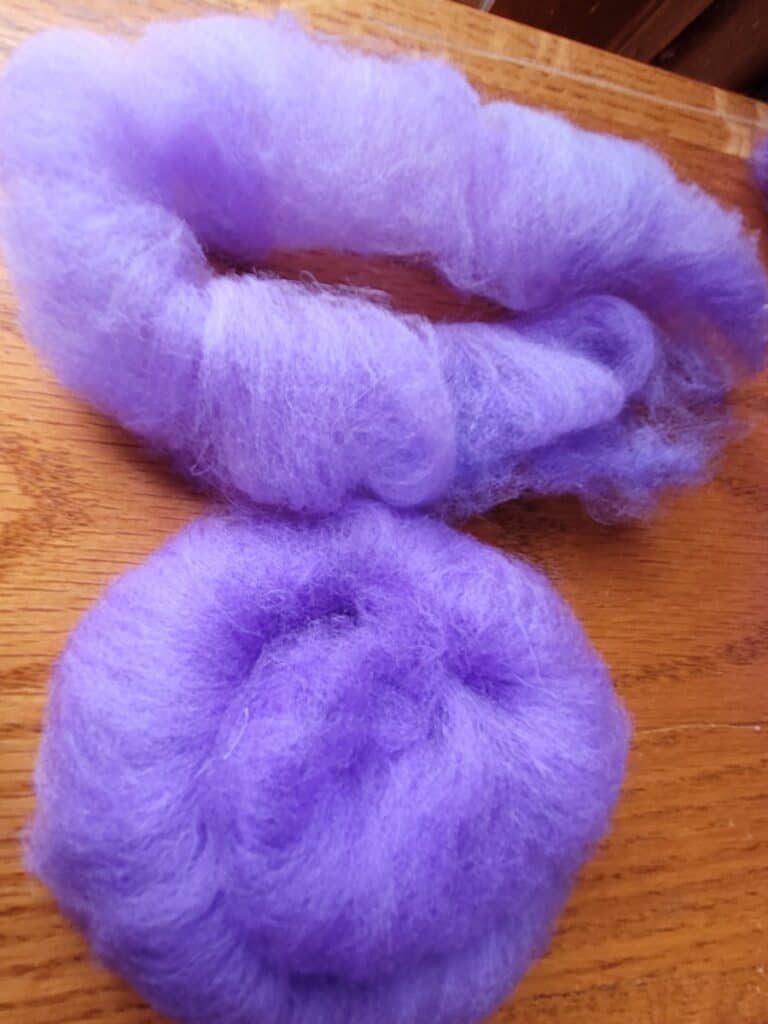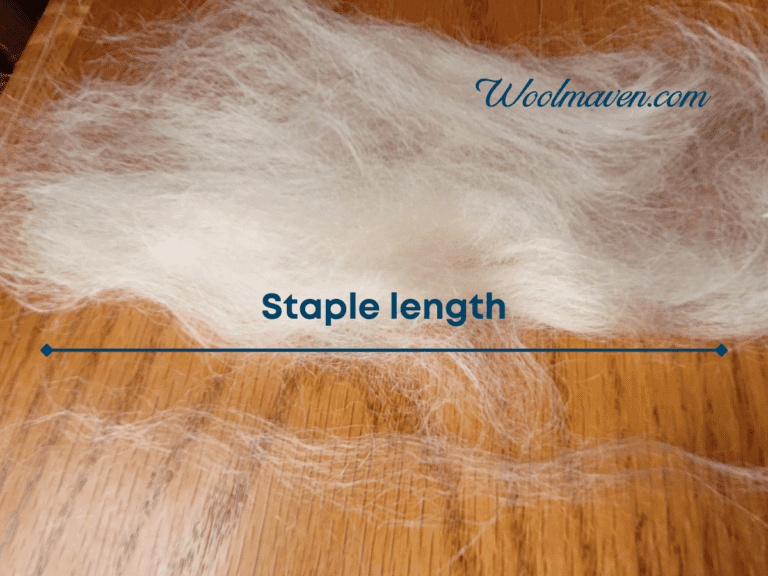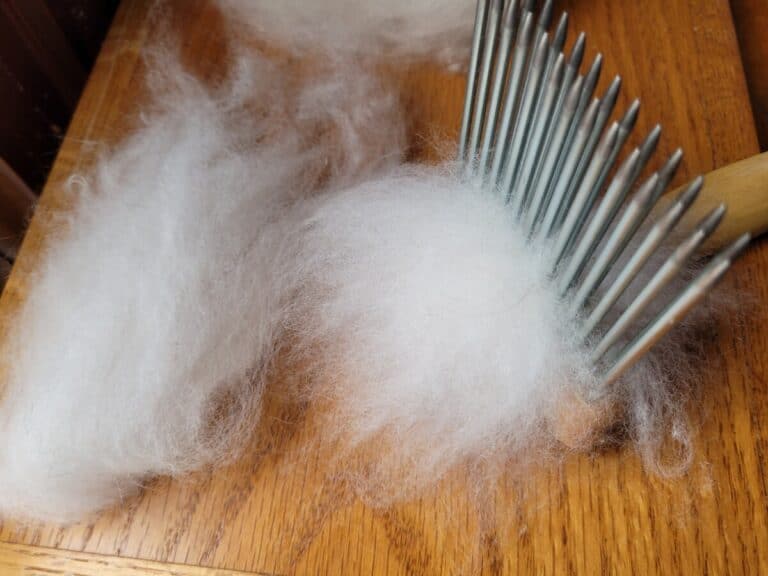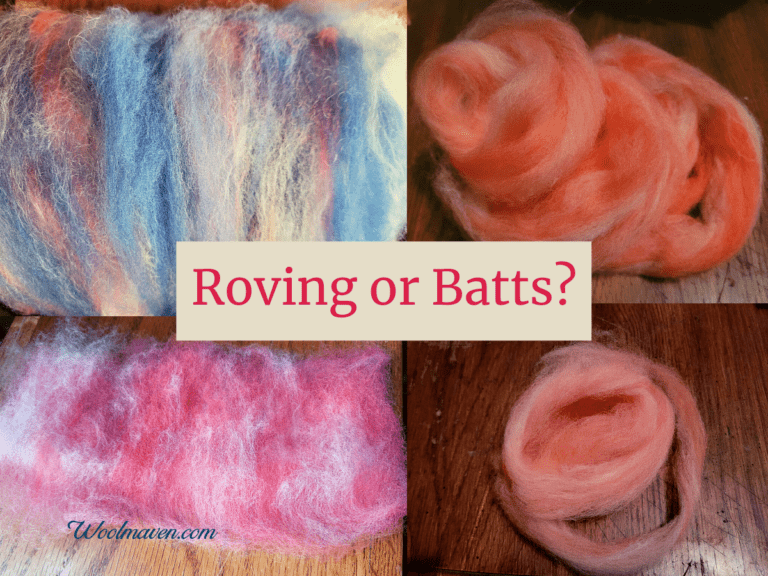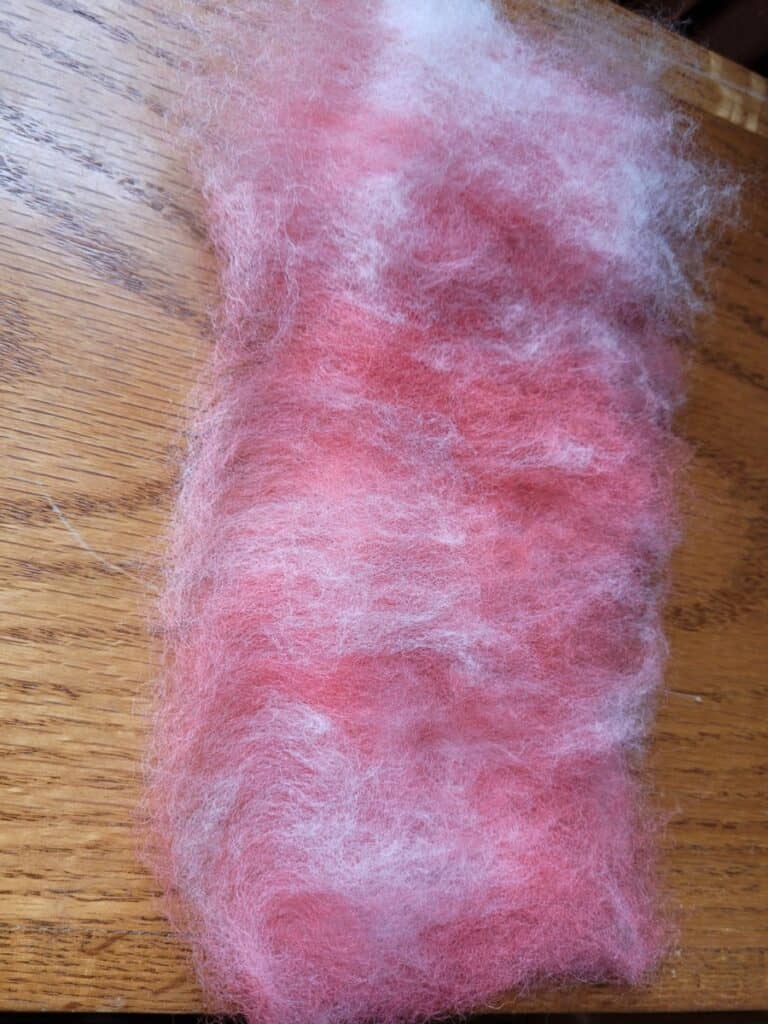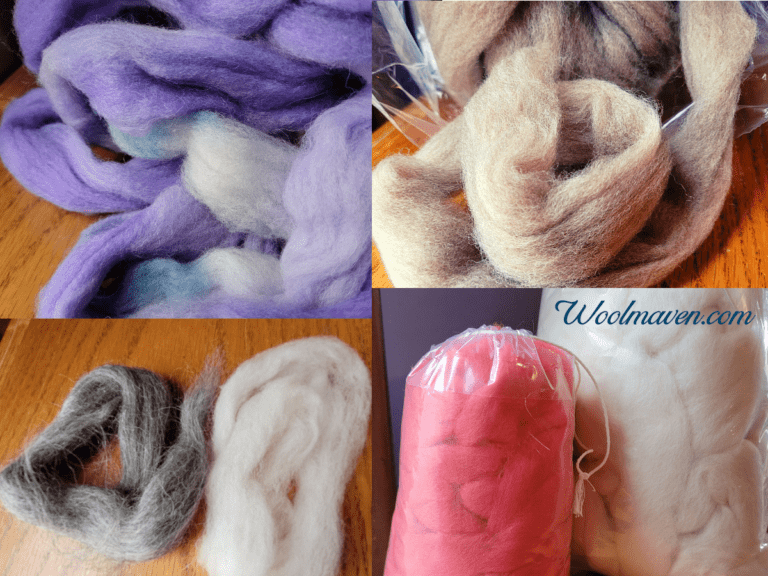Can You Handspin Combed Top?
When looking around for fiber to spin, you’ll notice that combed top pops up everywhere. Combed top is commonly available for all kinds of breed specific wools, other fibers and blends.
Obviously, more than a few folks are using combed top, and a lot of it, but for what, is combed top good for handspinning?
Combed top is easy and to handspin. Due to the fiber mill preparation process, combed top contains only the best spinning fibers from the fleece, making combed top smooth, even and easy to work with.
Is Merino Hard To Spin? gives some tips for exploring spinning with merino.
You can handspin combed top
You can easily spin combed top, actually if you have ordered ready to spin fiber you are probably already using combed top and didn’t realize it, since most of the fiber you can purchase is combed top.
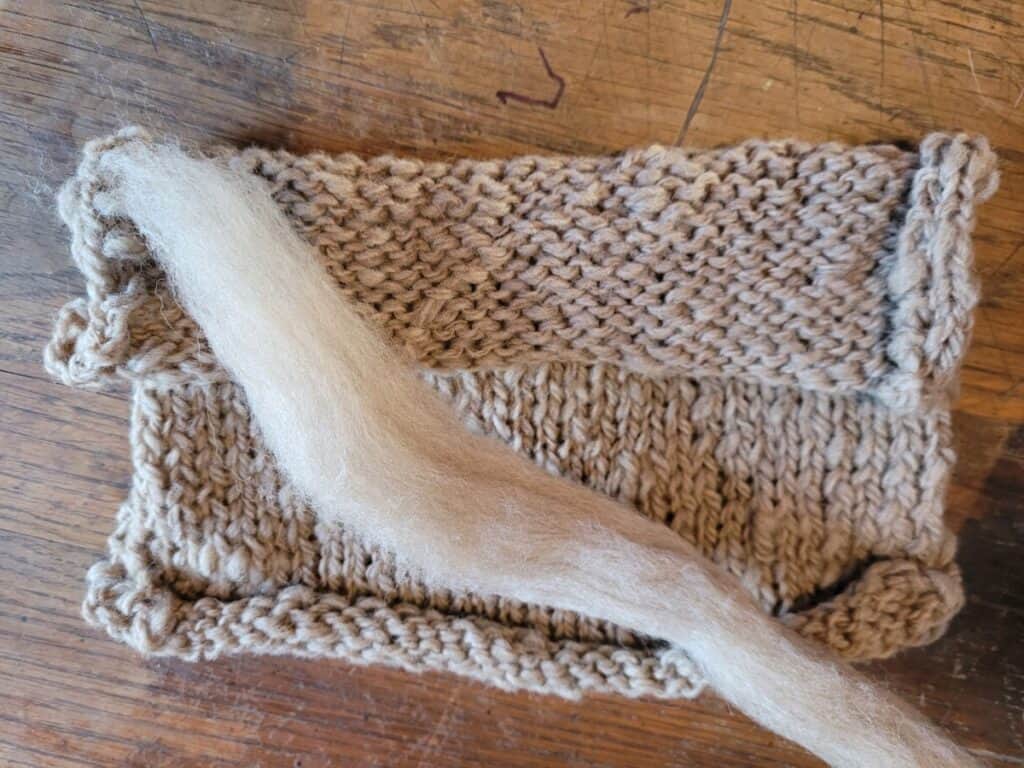
Difference between combed top and roving
Combed top is fiber that is put through an additional step to take it from carded to combed, which further aligns the fibers in more of a river and drops out any bits of VM and shorter fibers, along the way.
Combed top will look and feel smooth and almost dense, especially compared to a true roving, which we’ll talk about next.
Top is the most popular ready to use fiber that you can buy since it is so well prepared, which makes it very easy to work with and uniform to spin.
Plus, with the additional passes through the mill, it has little to no contaminants.
Roving is a term used interchangeably with top, as a catch all term for ready to spin fiber, but true roving is not actually the same thing as top, not at all!
True roving is more of a cloud of fiber that is ready to be spun. True roving has been carded so that the fibers are separated and fluffy and almost a bit disorganized, they are going in all different directions.
This disorganization is what gives yarn made with true roving their fluff or poof. This fluffiness allows the fibers to trap air, making a woolen spun yarn made from true roving very soft and super insulating.
This is the main difference between true roving and top, even if you spun them exactly the same, the true roving would produce a more fluffy yarn than the yarn made from combed top.
Raw Wool vs Washed Wool goes over the pros and cons of working with each.
When would you use combed top?
You would use combed top as your first choice fiber when you are learning to spin, since it is the easiest fiber preparation to find and when you are making a yarn that you want to have stitch definition.
You can find combed top available from any fiber supply store, both local shops and online, and at in person events.
Looking for a super easy spin? How To Spin Pencil Roving goes over everything you need to know to work with this super beginner friendly fiber!
Combed top makes spinning easy
Buying combed top makes spinning so easy! You can just open the bag and get right to seeing what you can do with your new to you fiber! Nice!
If you are used to preparing your own fiber, combed top is a real eye opener, it’s so easy to use and there is nearly zero wasted fiber.
When I use my home prepared fiber, I end up with all kinds of little bits on the floor around my chair, but with combed top, none of that. (I’m not the queen of fiber preparation, so this could just be me!)
Occasionally I mess up a part of the yarn beyond recovery and have to toss a bit out and restart that section, but it comes out of the bag perfect.
Combed top is available many breed specific wools
Another aspect of combed top is how accessible it makes the world’s wools to you, the everyday fiber enthusiast.
You can get wool from all over the world, in small enough amounts that you can experiment to see if you like it without committing to an entire fleece.
I love the fact that more of the unusual breeds, like Herdwick, are getting a bit of recognition and being offered up to handspinners as an alternative to the more commonly available spinning wools.
It is also nice that buying combed top allows you to work with wool without having to learn the specific fiber preparation for that breed or type of wool.
For instance, you can work with a long wool like Wensleydale or Teeswater as combed top to see how you like the wool before you invest in your own combs to prepare the wool yourself.
The Woolery has an easy to understand definition page for fiber preparations if you want a brief section on more than just combed top, scroll to the bottom.
Ways to prepare combed top for spinning
There are a few different ways that you can prepare combed top for spinning and, of course, you could just use the top, as is, right from the bag.
How you choose to work with the top is more about what suits you and your spinning style, meaning there is no right or wrong way to work with your top.
You’re trying to match up you and the method that is most likely to yield the end result you are hoping for. Play around and see which one tends to work for you, you’ll soon get the feel for it!
Spin combed top as is
You can, as mentioned above, spin the combed top, as is, right from the bag. If this works for you, super! For me, I end up with a really chubby yarn, so I section off the top, then get to spinning.
Section off the top
The first, maybe most easy thing to do with your combed top is to pull off a section, more like a chunk, and work with that.
The section will work more like a mini batt, so you can draft a bit of fiber and spin from one corner and work your way across the fiber.
This section off method will work well for any top that is thickly made, the thinner combed tops may be better split, instead, to give you a decent amount of fiber to work with before you have to join.
Split the top into columns
You can take a section of top that is 1-1.5 feet long and split it lengthwise into columns. I tend to split it into 4-6, but it really depends upon how dense the top is.
These split columns are called sliver, pronounced sly-ver, and if the splitting is down to really thin sliver, you are more into pencil roving territory, which is super as long as it works for you!
Number of splits depend upon the wool
For the merino I have, I just split it once or twice, that gave me a good amount of fiber going into the drafting zone that I could keep up with it and get the size of yarn I was planning on spinning.
Right now I’m spinning some Zwartbles and it takes more splitting for me to get a nice, easily draftable section of top. I’m splitting this one 8 or more times, probably because it was made pretty thick.
I like to have a bit less of the fiber in my hands or lap and add more as needed, which tends to keep me from under drafting and getting frustrated, so I rarely work with top, as is, I split or section it off.
If you find that you have split the top into too many sections, just put a few sections together in your hands and use them like they are all one section.

